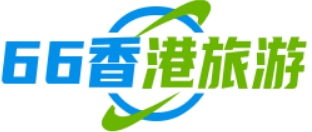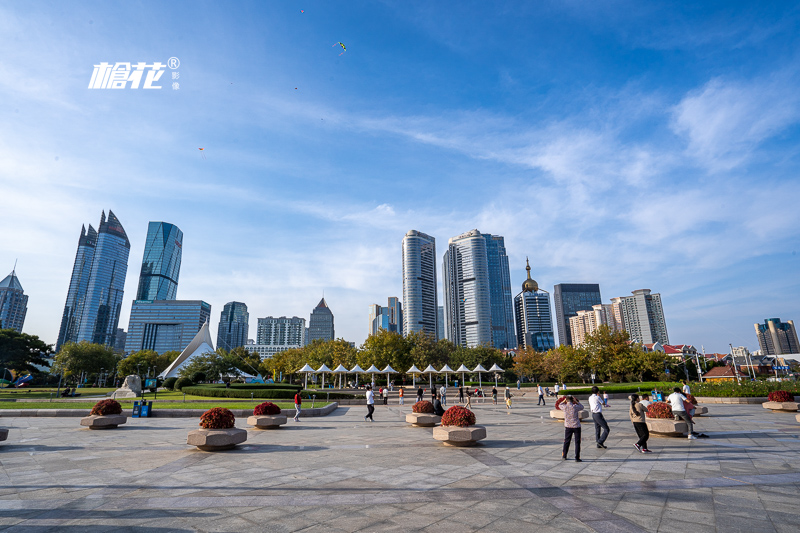本文目录
一、东京塔旅游景点英语介绍 东京著名景点介绍英文
1、Tokyo tower, the formal name Japan waves tower, Tokyo, is a harbor zhi park in Paris Eiffel Tower built for sample tower, but its high red than the Eiffel Tower, 168:272 meters above the 13 meters, is the highest in the world free-standing tower
2、Height of the Tower. Since its opening in 1958, the Tokyo Tower has been the world's tallest self-supporting steel tower. The Eiffel Tower in Paris is 320 m high.
3、The Tokyo Tower weighs about 4,000 tons. It is much lighter than the Eiffel Tower, which weighs 7,000 tons, a result of remarkable advances in steel manufacturing and construction technology.
4、Paint used for the Tower was 28,000 liters, equal to 140 drums. The Tower is painted orange and white according to the Civil Aeronautic Law.
5、This is the number of broadcast waves that Tokyo Tower is transmitting. Among them, 14 are analog waves and 10 are digital waves, which show that most broadcast stations in Tokyo are transmitting their waves from the Tower.
6、One hundred and seventy-six floodlights installed in various parts light up the Tower. The Tower is illuminated with an orange light in winter and white incandescent light in summer, delighting visitors and passers-by.
7、急!求Tokyo Tower的英文介绍,100词以上.再附加英文地理位置介绍。
8、东京塔位于东京市内,建成于1958年,塔高333米,这座日本最高的独立铁塔上部装有东京都7个电视台、21个电视中转台和广播台等的无线电发射天线。在100米高的地方,建有一个二层楼高的展望台;在250米高的地方,也设有一个特别展望台。展望台四边都是落地的大玻璃窗,窗向外倾斜。站在展望台上可俯瞰东京市容,全市景观尽收眼底。
9、Tokyo Tower is located in Tokyo, was built in 1958, the Tower 333 meters high, which Japan independence with the highest top of the tower is equipped with 7 television stations-Ku, Tokyo, 21 TV relay station and radio station radio transmitting antennas. In the 100-meter-high places, there is the prospect of a two-story-high; in the 250-meter-high places are also provided with a special perspective. Looking to the sides are large glass windows of the ground, tilted out of the window. Stations on the prospect platform overlooking the city of Tokyo, the city's landscape offers.
10、4-8-1 Shibakoen, Minato, Tokyo Prefecture 105-8563, Japan
二、日本东京迪士尼英语介绍。
1、Tokyo Disneyland, built in 1982, is located in Pu'an City, Chiba Prefecture, east of Tokyo, Japan. It was built by Disney Corporation of the United States and Catalpa Design Company of Japan. Tokyo Disneyland, known as Asia's first amusement park, was built according to American Disneyland. The theme park covers an area of 46 hectares.
2、Tokyo Disneyland is mainly divided into seven districts: World Fair, Adventure Park, West Paradise, Animal World, Dreamland, Cartoon City and Tomorrow Paradise. There are various parades on the stage and square.
3、东京迪士尼乐园,修建于1982年,位于日本东京都以东的千叶县浦安市舞滨,是由美国迪士尼公司和日本梓设计公司合作建造的。被誉为亚洲第一游乐园的东京迪士尼乐园,依照美国迪士尼乐园而修建,主题乐园面积为四十六公顷。
4、东京迪士尼乐园主要分为世界市集、探险乐园、西部乐园、动物天地、梦幻乐园、卡通城及明日乐园等7个区,园内的舞台以及广场上定时会有各种各样的游行活动。
5、喜欢米奇老鼠的朋友可别错过,这里每时每刻都有大型歌舞可看,主角都是迪士尼中的角色。伴奏的曲目,也都是迪斯士尼电影的名曲。
6、这可是有点惊险的地方,喜欢冒险的朋友一定会钟意。这也是东京迪士尼的“独家经营”。游客们进入城堡中,通过城堡探险活动,互动性很强。“灰姑娘城”是迪士尼中最受欢迎的地方之一。
7、这是一个童话式的乐园。在这里你可以遇到许多童话中的主人公,灰姑娘、匹诺曹、米奇,还能到“小小世界”里去逛逛,一边听着由世界各国演唱的“小小世界”,坐着小船。
8、从欧洲、亚洲、非洲一直到中南美洲和太平洋洲,不同的民俗风情,最终在童声大合唱中结束世界一周的旅行,你一定会不想离开这个梦一般的世界。
9、参考资料来源:百度百科—东京迪士尼乐园
三、东京文化旅游景点介绍英文版 东京著名景点英文介绍
Arashiyama(岚山?) is a district on the western outskirts of Kyoto, Japan. It also refers to the mountain across the _i River, which forms a backdrop to the district.
Notable tourist sites in Arashiyama include
The Iwatayama Monkey Park on the slopes of Mount Arashiyama. Over 170 monkeys live at the park. While the monkeys are wild, they have become accustomed to humans. The park is located on a small mountain not far from the Saga-Arashiyama rail station. Visitors can approach and photograph the monkeys. At the summit is a fenced enclosure, from within which visitors can feed the monkeys.
The romantic"Moon Crossing Bridge"(渡月桥,Togetsukyō), notable for its views of cherry blossoms and autumn colors on the slopes of Mt Arashiyama.
The tombstone of the Heike courtesan Kogo of Sagano.
Tenryū-ji, the main temple of the Rinzai school, one of the two main sects of Zen Buddhism in Japan.
The hamlet of Kiyotaki, a small scenic village at the base of Mt Atago, the home to a notable Shinto shrine.
Matsuo Shrine, half a mile south of the area, which is home to a blessed spring. It is also one of the oldest shrines in the Kyoto area, founded in 700. The alleged restorative properties of the spring bring many local sake and miso companies to the shrine for prayers that their product will be blessed.
Kameyama koen has a stone commemorating Zhou Enlai's visited to Arashiyama. He was moved by the cherry blossoms and mountain greenery. The four poems Zhou Enlai wrote about his visit are engraved on a stone monument:"Arashiyama in the Rain."
Nijō Castle(二条城,Nijō-jō?) is a flatland castle located in Kyoto, Japan. The castle consists of two concentric rings of fortifications, the Ninomaru Palace, the ruins of the Honmaru Palace, various support buildings and several gardens. The surface area of the castle is 275,000 square meters, of which 8000 square meters is occupied by buildings.日本伊豆景点
Present plan of Nijō Castle(click for detailed view)In 1601, Tokugawa Ieyasu, the founder of the Tokugawa Shogunate, ordered all the feudal lords in Western Japan to contribute to the construction of Nijō Castle, which was completed during the reign of Tokugawa Iemitsu in 1626. Parts of Fushimi Castle, such as the main tower and the Kara Gate, were moved here in 1625-26.[1] It was built as the Kyoto residence of the Tokugawa Shoguns. The Tokugawa Shogunate used Edo as the capital city, but Kyoto continued to be the home of the Imperial Court. Kyoto Imperial Palace is located north-east of Nijo Castle.
The central keep, or donjon, was struck by lightning and burned to the ground in 1791.
In 1788, the Inner Palace was destroyed by a city-wide fire. The site remained empty until it was replaced by a prince's residence transferred from the Kyoto Imperial Palace in 1893.
In 1867, the Ninomaru Palace was the stage for the declaration by Tokugawa Yoshinobu, returning the authority to the Imperial Court. Next year the Imperial Cabinet was installed in the castle. The palace became imperial property and was declared a detached palace. During this time, the Tokugawa hollyhock crest was removed wherever possible and replaced with the imperial chrysanthemum.
In 1939, the palace was donated to the city of Kyoto and opened to the public the following year.
Ryōan-ji(Shinjitai: _安寺, Kyūjitai:龙安寺?, The Temple of the Peaceful Dragon) is a Zen temple located in northwest Kyoto, Japan. Belonging to the Myoshin-ji school of the Rinzai branch of Zen Buddhism, the temple is one of the Historic Monuments of Ancient Kyoto, a UNESCO World Heritage Site.日本冬季景点
The site of the temple was originally a Fujiwara family estate. It eventually came into the hands of the Hosokawa clan branch of the Fujiwaras. Hosokawa Katsumoto inherited the residence, and lived here before the _nin War. Katsumoto willed the war-ravaged property to be converted into a Zen sect temple complex after his death. Later Hosokawa emperors are grouped together in what are today known as the"Seven Imperial Tombs" at Ryoan-ji. The burial places of these emperors-- Uda, Kazan, Ichijō, Go-Suzaku, Go-Reizei, Go-Sanjō, and Horikawa-- would have been comparatively humble in the period after their deaths. These tombs reached their present state as a result of the 19th century restoration of imperial sepulchers(misasagi) which were ordered by Emperor Meiji.[1]
Ryōan-ji's tsukubai(蹲踞?), which is a small basin provided at Japanese Buddhist temples for visitors to purify themselves by the ritual washing of hands and rinsing of the mouth.An object of interest near the rear of the monks quarters is the carved stone receptacle into which water for ritual purification continuously flows. This is the Ryōan-ji tsukubai(蹲踞?), which translates literally as"crouch;" and the lower elevation of the basin requires the user to bend a little bit to reach the water, which suggests supplication and reverence.[2] The kanji written on the surface of the stone are without significance when read alone. If each is read in combination with口(kuchi), which the central bowl is meant to represent, then the characters become吾,唯,足,知. This is read as"ware tada taru(wo) shiru" and translates literally as"I only know plenty"(吾= ware= I,唯= tada= only,足= taru= plenty,知= shiru= know). The meaning of the phrase carved into the top of the tsukubai is simply that"what one has is all one needs" and is meant to reinforce the basic anti-materialistic teachings of Buddhism.
The absence of a dipper is intended to imply that the water is for the soul only and that it is necessary to bend the knee in humility in order to receive its blessing.
Kiyomizu-dera(清水寺?), full name Otowa-san Kiyomizu-dera(音羽山清水寺?) is an independent Buddhist temple in eastern Kyoto. The temple is part of the Historic Monuments of Ancient Kyoto(Kyoto, Uji and Otsu Cities) UNESCO World Heritage site.[1] Not one nail is used in the whole temple. The temple should not be confused with Kiyomizu-dera in Yasugi, Shimane, which is part of the 33-temple route of the Chūgoku 33 Kannon Pilgrimage through western Japan.[2]
其实这些都是维基百科找来的,本来想给链接的,百度说我有广告,只贴了部分,其他的可用google维基百科英文版找,包括景点介绍,历史什么的很全的。
日本又哪些景点(中英文互译的)
大涌谷(Owakudani)是箱根最著名的旅游景点。在绿树环抱的箱根中惟独此处山岩裸露,岩缝间喷出的地热蒸气雾气腾腾,令人感到地球的生命运动,尉为壮观。由此可眺望富士山和箱根群山的美丽景色。
东京迪斯尼有两大主题乐园,七座舒适的大饭店,以及其它购物娱乐设施所组成的欢乐世界。是大人找回童真,小孩寻找快乐的地方。
Tower)位于东京市内,建成于1958年,塔高333米,这座日本最高的独立铁塔上部装有东京都7个电视台、21个电视中转台和广播台等的无线电发射天线。在250米高的地方,也设有一个特别展望台。展望台四边都是落地的大玻璃窗,窗向外倾斜。
Mountain)位于本州岛中南部,海拔3776米,是日本最高峰,日本人奉之为“圣山”,是日本民族的象征,距东京约80公里,跨静冈、山梨两县,面积为90.76平方公里。整个山体呈圆锥状,山顶终年积雪。
Temple)位于奈良市的唐招提寺是由中国唐代高僧鉴真和尚亲手兴建的,是日本佛教律宗的总寺院,这座具有中国盛唐建筑风格的建筑物被确定为日本国宝。
富士山,是一座跨越在日本静冈县(富士宫市、裾野市、富士市、御殿场市、骏东郡小山町)与山梨县(富士吉田市、南都留郡鸣_村)之间的活火山。
东京塔是东京地标性建筑物,位于东京都港区芝公园,高332.6米。东京塔除主要用于发送电视、广播等各种无线电波外、还在大地震发生时发送JR列车停止信号,兼有航标、风向风速测量、温度测量等功能。日本知名景点
阿苏山是日本著名活火山。位于九州岛熊本县东北部,是熊本的象征,以具有大型破火山口的复式火山闻名于世。略呈椭圆形,南北长24公里,东西宽18公里,周围约120公里,面积250平方公里。
4,唐招提寺(Tōshōdai Temple)
唐招提寺,日本佛教律宗建筑群。简称为招提寺。在日本奈良市西京五条。由中国唐朝鉴真主持,于公元759年建成,与东大寺的戒坛院并为传布和研究律学的两大道场。
鹿苑寺(ろくおんじ),是位于日本京都市北区的临济宗相国寺派的寺院。其中,内外都贴满了金箔的三层楼阁建筑(舍利殿)也被称为金阁,包括舍利殿在内的寺院整体也被称为金阁寺(きんかくじ)。该寺为相国寺的山外塔头寺院。
参考资料来源:百度百科-唐招提寺
Tokyo is the capital of Japan.It is the biggest city in Asia and it is also very beatiful.You can see the beatiful mountain in Tokyo.There is snow on it and it looks very nice.I hope on day I can go there.











